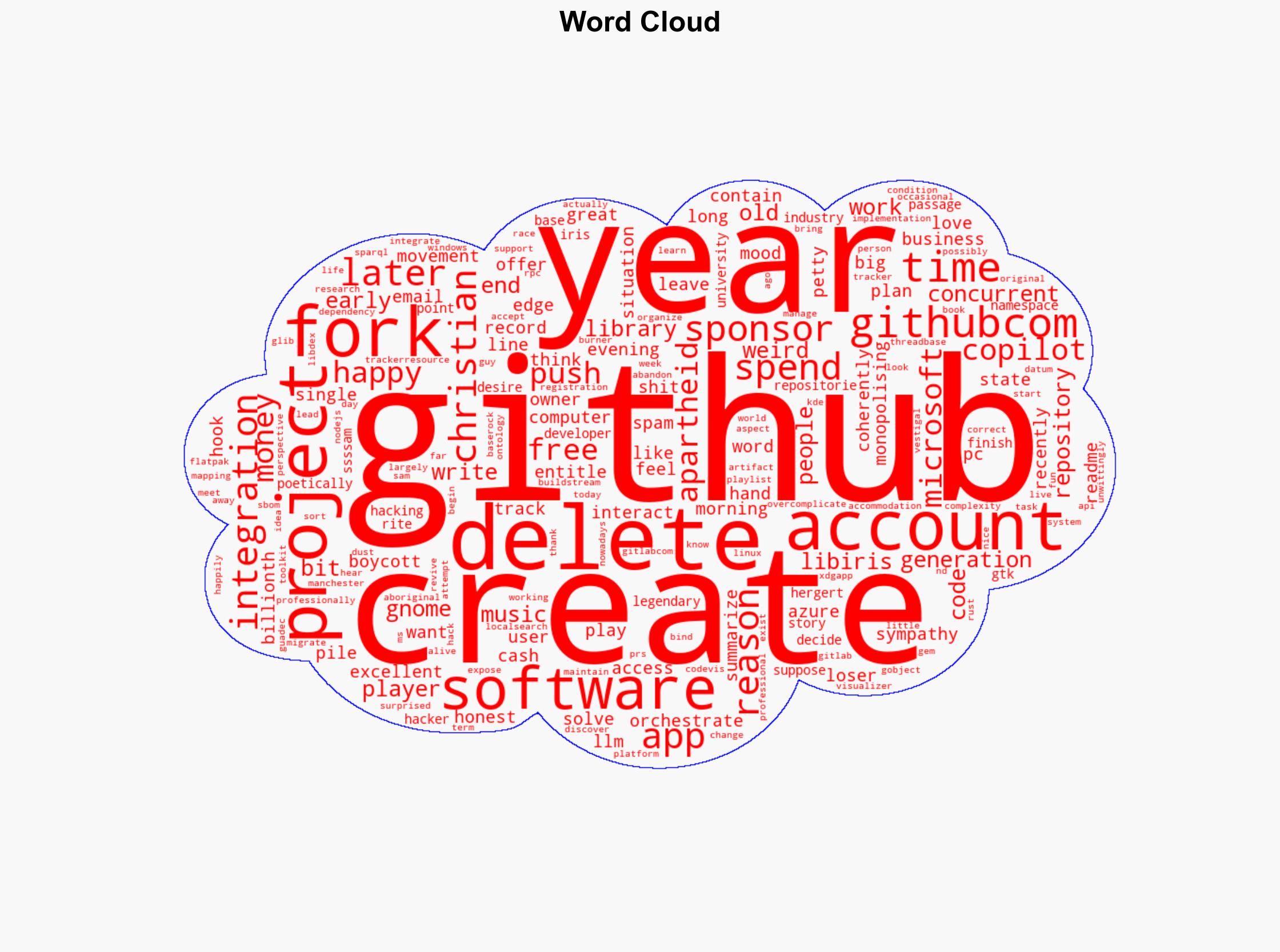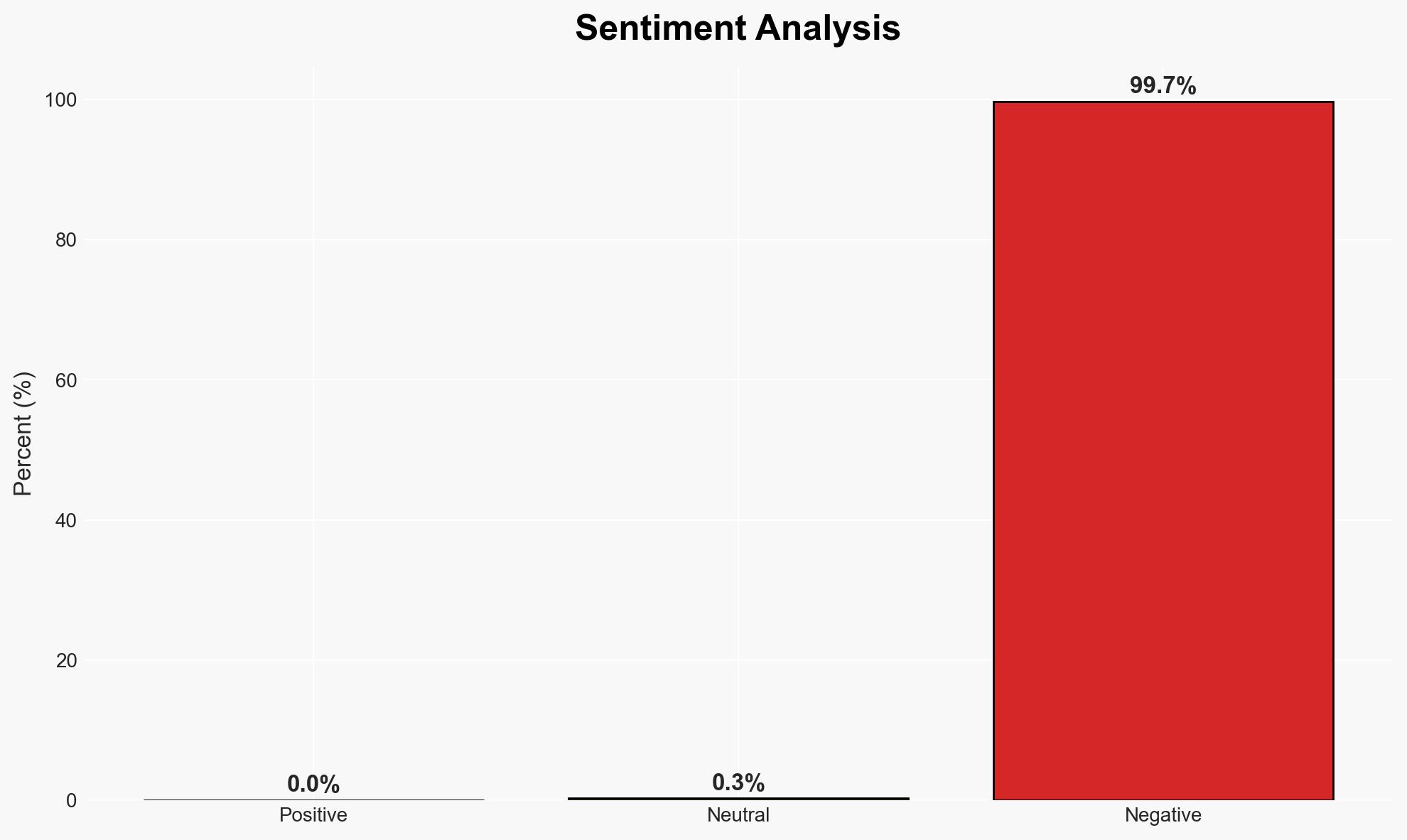Sam Thursfield Deletes GitHub Account in Protest Against Microsoft’s Practices
Published on: 2025-11-27
AI-powered OSINT brief from verified open sources. Automated NLP signal extraction with human verification. See our Methodology and Why WorldWideWatchers.
Intelligence Report: Sam Thursfield Bollocks to Github
1. BLUF (Bottom Line Up Front)
The decision by Sam Thursfield to delete his GitHub account appears motivated by ideological opposition to Microsoft’s ownership and perceived unethical practices. This action could signal a broader trend of discontent among developers regarding corporate influence in open-source communities. Overall confidence in this assessment is moderate, given the limited context and specific motivations.
2. Competing Hypotheses
- Hypothesis A: Sam Thursfield’s account deletion is primarily driven by personal ideological beliefs against Microsoft’s business practices, particularly its association with controversial policies. Supporting evidence includes his explicit statements against Microsoft and GitHub. Key uncertainties involve the extent of influence these beliefs have on his professional decisions.
- Hypothesis B: The account deletion is a strategic move to align with alternative platforms like GitLab, potentially due to professional or community-driven incentives. While there is some evidence of migration to GitLab, the primary motivation appears less supported by the text.
- Assessment: Hypothesis A is currently better supported due to explicit expressions of ideological opposition. Indicators that could shift this judgment include evidence of coordinated migration efforts or professional incentives tied to alternative platforms.
3. Key Assumptions and Red Flags
- Assumptions: The decision is primarily ideological; GitHub’s policies are perceived negatively by a significant portion of the developer community; alternative platforms offer viable substitutes.
- Information Gaps: Lack of detailed context on broader community sentiment and specific actions by Microsoft or GitHub that may have influenced this decision.
- Bias & Deception Risks: Potential cognitive bias in interpreting personal statements as representative of broader trends; risk of source bias due to the personal nature of the statement.
4. Implications and Strategic Risks
This development could influence broader trends in developer platform preferences and impact Microsoft’s strategic positioning in the open-source community.
- Political / Geopolitical: Limited direct implications, but potential for increased scrutiny on corporate practices in tech governance.
- Security / Counter-Terrorism: Minimal direct impact; however, shifts in platform use could affect software supply chain security dynamics.
- Cyber / Information Space: Potential for increased fragmentation in developer communities, impacting collaboration and innovation.
- Economic / Social: Possible economic implications for Microsoft if a significant migration away from GitHub occurs, affecting its market share and influence.
5. Recommendations and Outlook
- Immediate Actions (0–30 days): Monitor developer community forums for signs of broader discontent; assess potential impacts on software supply chains.
- Medium-Term Posture (1–12 months): Develop resilience measures for potential shifts in platform usage; consider partnerships with alternative platforms to diversify dependencies.
- Scenario Outlook: Best: Developers remain on GitHub with improved policies. Worst: Mass migration to alternative platforms, affecting Microsoft’s market position. Most-Likely: Gradual diversification with some migration, but GitHub remains a key player.
6. Key Individuals and Entities
- Sam Thursfield
- Microsoft
- GitHub
- GitLab
- Christian Hergert (mentioned in historical context)
7. Thematic Tags
Structured Analytic Techniques Applied
- Adversarial Threat Simulation: Model and simulate actions of cyber adversaries to anticipate vulnerabilities and improve resilience.
- Indicators Development: Detect and monitor behavioral or technical anomalies across systems for early threat detection.
- Bayesian Scenario Modeling: Quantify uncertainty and predict cyberattack pathways using probabilistic inference.
Explore more:
Cybersecurity Briefs ·
Daily Summary ·
Support us





